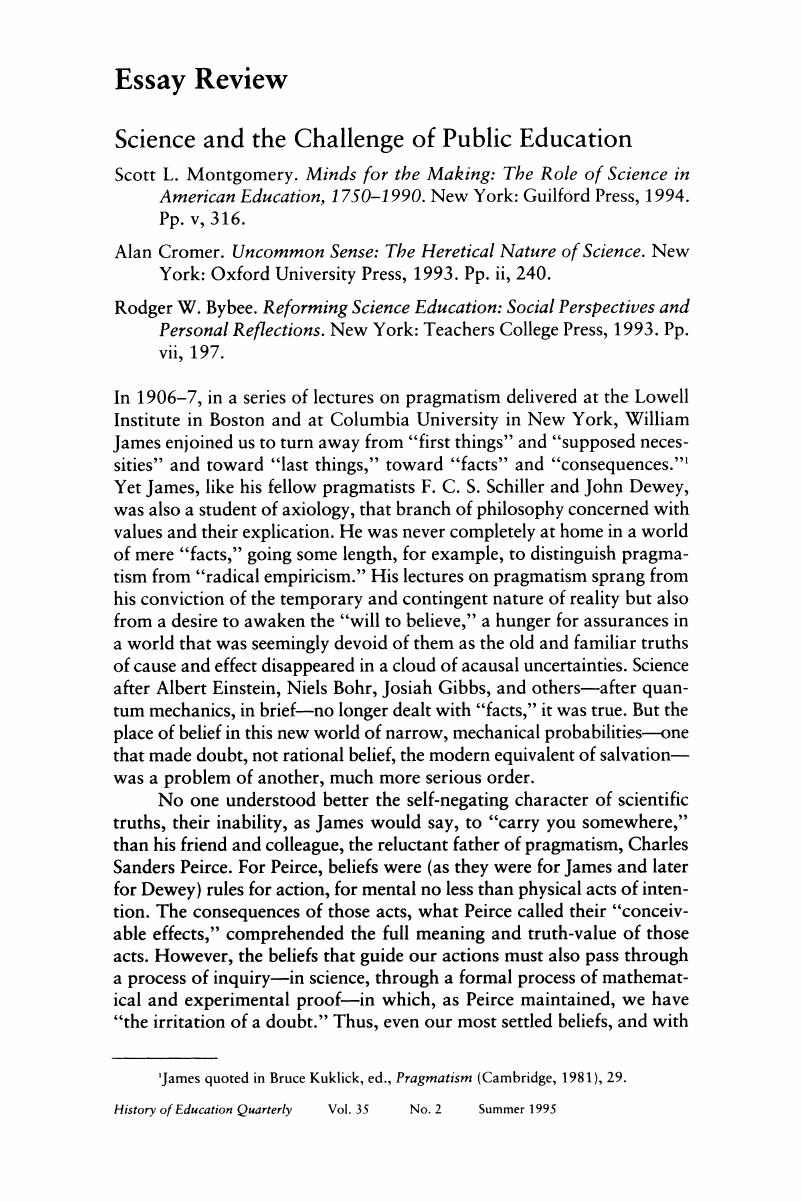No CrossRef data available.
Published online by Cambridge University Press: 24 February 2017

1 James quoted in Kuklick, Bruce, ed., Pragmatism (Cambridge, 1981), 29.Google Scholar
2 Medawar, P. B., The Limits of Science (New York, 1984), 79, 80; Kuhn quoted in Lakatos, Imre and Musgrave, Alan, ed., Criticism and the Growth of Knowledge (New York, 1970), 12.Google Scholar
3 Egan, Kieran, Romantic Understanding: The Development of Rationality and Imagination, Ages 8–15 (New York, 1990), ch. 7. She first discusses the idea on pages 113–18.Google Scholar
4 See Popper, Karl, “Normal Science and Its Dangers,” in Criticism and Growth, ed. Lakatos, and Musgrave, , 51–58.CrossRefGoogle Scholar
5 American Association for the Advancement of Science (AAAS), The Liberal Art of Science: Agenda for Action. The Report of the Project on Liberal Education and the Sciences (Washington, D.C., 1990), 43, 12.Google Scholar
6 Shamus, H. H., Proceedings of the Iowa Curriculum Update (Iowa City, Iowa, 1980); AAAS, The Liberal Art of Science, 43; Carnegie Commission on Science, Technology, and Government, In the National Interest: The Federal Government in the Reform of K–12 Math and Science Education (New York, 1991), 19.Google Scholar
7 See Caldwell, Otis W., “The Laboratory Method and High School Efficiency,” Popular Science Monthly 82 (Mar. 1913): 243–51; “Preliminary Report of the Committee on a Unified High School Science Course,” School Science and Mathematics 14 (1914): 166–68; and Caldwell to James McKeen Cattell, 24 Mar. 1932, box 9, James McKeen Cattell Papers, Manuscripts Division, United States Library of Congress, Washington, D.C. Caldwell was an early advocate of the kind of broad, generalized science education, containing explicit behavioral objectives, that has become so popular today.Google Scholar
8 Berlin, Isaiah, Against the Current: Essays in the History of Ideas (New York, 1980), 106–7.Google Scholar
9 See Dewey, John, “Science as Subject Matter and as Method,” Science 31 (28 Jan. 1910): 121–27; “The Child and the Curriculum” in John Dewey: The Middle Works, 1899–1924, Vol. 2: 1902–1903 , ed. Boydston, Jo Ann (Carbondale, Ill., 1976), 287.CrossRefGoogle ScholarPubMed